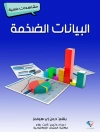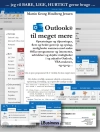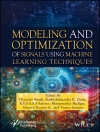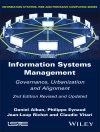Businesses are becoming increasingly aware of the importance of
data and information. As such, they are eager to develop ways to
manage them, to enrich them and take advantage of them.
Indeed, the recent explosion of a phenomenal amount of data,
and the need to analyze it, brings to the forefront the well-known
hierarchical model: Data, Information, Knowledge .
Data this new intangible manna is produced in real time. It
arrives in a continuous stream and comes from a multitude of
sources that are generally heterogeneous. This accumulation of
data of all kinds is generating new activities designed to analyze
these huge amounts of information. It is therefore necessary to
adapt and try new approaches, methods, new knowledge and
new ways of working. This leads to new properties and new
issues as a logical reference must be created and implemented. At
the company level, this mass of data is difficult to manage;
interpreting it is the predominant challenge.
Spis treści
Foreword ix
Acknowledgements xiii
Introduction xv
Chapter 1. From Data to Decision-Making: A Major Pathway 1
1.1. Background on economic intelligence 2
1.2. Strategic economic intelligence revisited 3
1.2.1. The three major steps for decision support 3
1.2.2. Modeling the concept of strategic business intelligence 4
1.3. Conclusion 9
Chapter 2. Data: An Indispensable Platform for Companies 11
2.1. The key figures of digital technology 14
2.1.1. Figures on social networks 20
2.1.2. Numbers: Big Data 22
2.1.3. Key figures: the Internet of Things 24
2.2. The power of data: a major challenge 28
2.3. The Big Data revolution, 'Mega Data’ 30
2.3.1. Understanding the world of Big Data 31
2.3.2. Open data: a new challenge 41
2.4. Developing the culture of data sharing 55
2.5. Storage of data in databases 56
2.6. The appearance of buzzwords: Big, Open, Viz, etc. 58
2.7. Conclusion 59
Chapter 3. From Data to Information: Essential Transformations 63
3.1. Value creation from data processing 63
3.2. Value creation and analysis of open databases 69
3.3. From data to information: the 'Data Viz’ or data visualization 73
3.4. From data to information: statistical processing 74
3.4.1. Phases of data processing 75
3.4.2. Processing the data 75
3.5. Turning mass data into an opportunity for innovation 81
3.6. Development of company assets in the web of data 87
3.7. Conclusion 91
Chapter 4. Information: Contextualized and Materialized Data 93
4.1. What is information? 94
4.1.1. How can we define information? 94
4.2. Internal and external information 100
4.2.1. Internal information 100
4.2.2. External information 100
4.3. Formal and informal information 100
4.3.1. Formal information 100
4.3.2. Informal information 101
4.4. Importance of information 101
4.4.1. White information 101
4.4.2. Gray information 101
4.4.3. Black information 101
4.5. Décodex set up by Le Monde 102
4.6. Conclusion 103
Chapter 5. From Information to Knowledge: Valuing and Innovating 105
5.1. Innovation as a driving force of growth 105
5.1.1. Innovation and the intangible economy 106
5.2. Knowledge: the key to innovation 108
5.3. Building knowledge: economic intelligence 109
5.3.1. The EI process and the transition from information to knowledge 110
5.3.2. Managing the data warehouse to extract knowledge and insight 111
5.4. Data mining, Statistica and Tibco 114
5.5. Information an economic good? 115
5.5.1. Innovation as a driving force of growth 115
5.5.2. Strategic business intelligence 116
5.6. What is data science? 118
5.7. Conclusion 119
Chapter 6. From Knowledge to Strategic Business Intelligence: Decision-Making 121
6.1. Data valuation mechanisms 121
6.2. How do you value data? 122
6.3. Data governance: a key factor in valuation 132
6.4. EI: protection and enhancement of digital heritage 138
6.5. Data analysis techniques: data mining/text mining 143
6.6. Conclusion 148
Conclusion 151
Glossary 157
References 159
Index 173
O autorze
Jean-Louis Monino is a Researcher at the Montpellier Recherche en Economie laboratory, Emeritus Professor at the University of Montpellier, and Head of the Traitement et Recherche de l’Information et de la Statistique laboratory in France. His research focuses on data processing, econometrics, statistics, data mining, forecast techniques and economic intelligence.












